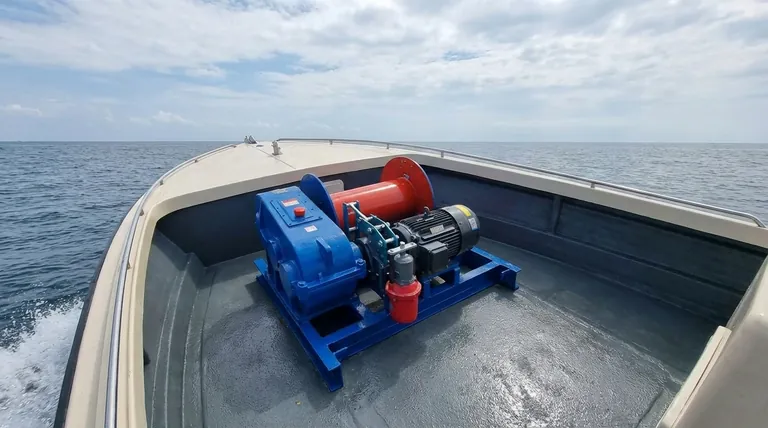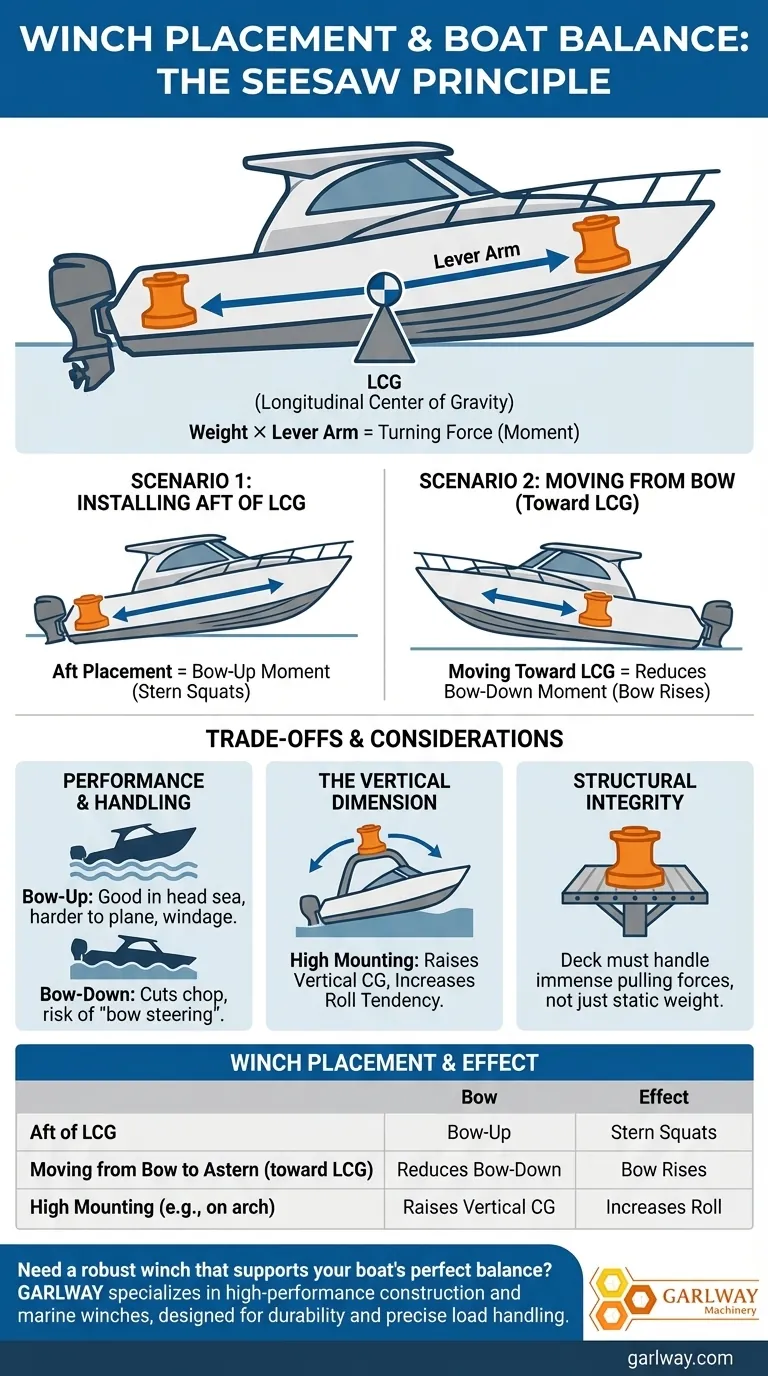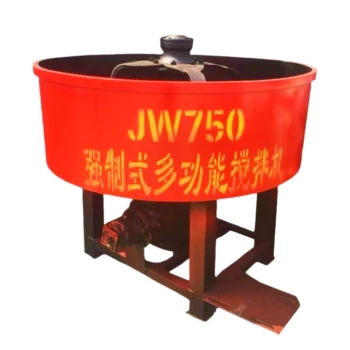Mounting a winch further astern causes a distinct effect on your boat's balance that depends entirely on its position relative to the vessel's pivot point. An 80-pound winch is a significant weight, and its placement creates a turning force, or "moment," that will alter your boat's trim. The common assumption that weight in the back always makes the bow go up is an oversimplification of the physics at play.
Your boat behaves like a seesaw, with its Longitudinal Center of Gravity (LCG) acting as the fulcrum. The actual effect of moving the winch depends on whether you are moving it toward or away from this central pivot point, not just whether it's in the bow or stern.

The Seesaw Principle: Your Boat's Balance Explained
To make an informed decision, you must first understand the core principles governing your boat's stability. It's less about simple weight and more about leverage.
What is the Center of Gravity (CG)?
Think of the Center of Gravity as the single point where your boat's entire weight is perfectly balanced. For fore-and-aft trim, we are most concerned with the Longitudinal Center of Gravity (LCG). This is the fulcrum of the seesaw.
The Power of the Lever Arm
Any weight that is not placed directly on the LCG creates a lever arm. This is the horizontal distance from the weight to the LCG.
The turning force this weight exerts is called a moment, which is calculated as Weight × Lever Arm. An 80-pound winch placed 15 feet from the LCG exerts a much stronger turning force than the same winch placed only 5 feet away.
Visualizing the Impact
Imagine two people of equal weight on a seesaw. If one person slides from the very end toward the center (the fulcrum), their end of the seesaw rises. They didn't get lighter; they simply shortened their lever arm, reducing their leverage. Your winch behaves the same way.
How Winch Placement Alters Trim
Understanding the seesaw principle allows us to analyze the two most likely scenarios for moving a winch "further astern."
Scenario 1: Installing a New Winch Aft of Center
If you install an 80-pound winch behind the LCG, you are adding weight to the stern half of the "seesaw."
This creates a bow-up moment. The stern will sit lower in the water (squat), and the bow will rise. Moving the winch even further astern increases the length of the lever arm, which magnifies this bow-up effect.
Scenario 2: Moving a Bow-Mounted Winch Astern
Now, assume the 80-pound winch is already mounted far forward on the bow, well ahead of the LCG. In this position, its weight and long lever arm create a strong bow-down moment.
If you move this winch "further astern" (meaning, closer to the LCG), you are shortening its lever arm. This reduces the existing bow-down moment, causing the bow to rise relative to its previous, more forward position.
Understanding the Trade-offs
The change in trim isn't just cosmetic; it has real-world consequences for performance and safety.
Impact on Performance and Handling
A bow-up attitude can be beneficial in a head sea, helping to keep the bow from plunging into waves. However, too much can make it difficult for a planing hull to get "on plane" and can increase windage.
A bow-down attitude helps the boat cut through chop, but too much can cause "bow steering," where the V of the hull digs in and makes the boat veer unpredictably, which can be dangerous.
The Vertical Dimension
Mounting the 80-pound winch high up, such as on a hardtop or arch, not only affects fore-and-aft trim but also raises the boat's overall vertical center of gravity. This makes the boat more "top-heavy," increasing its tendency to roll in a beam sea.
Structural Integrity
Beyond balance, the chosen location must be strong enough to handle the immense pulling forces the winch will generate during operation. The deck must be reinforced to distribute this load, as the winch's static weight is a minor concern compared to its working load.
Making the Right Choice for Your Goal
The "best" location is a compromise between ideal balance and practical function. Consider your primary goal to find the optimal placement.
- If your primary focus is high-speed planing performance: Strive to place heavy items as close to the Longitudinal Center of Gravity as possible to minimize their impact on the boat's designed running attitude.
- If your primary focus is comfort in rough, open water: A slight bow-up trim from a moderately aft winch placement can create a drier, safer ride when heading into waves.
- If your primary focus is operational ease and safety: Prioritize a location that gives you clear access, good footing, and a straight pull, even if it results in a minor trim imbalance that you can correct with trim tabs or cargo placement.
Ultimately, balancing your vessel is an exercise in making intentional choices to align its handling characteristics with your specific needs on the water.
Summary Table:
| Winch Placement | Effect on Boat's Balance | Key Consideration |
|---|---|---|
| Aft of LCG | Creates a bow-up moment, stern squats | Increases lever arm, magnifies effect |
| Moving from Bow to Astern (toward LCG) | Reduces bow-down moment, bow rises | Shortens lever arm, improves trim |
| High Mounting (e.g., on arch) | Raises vertical CG, increases roll tendency | Affects stability in beam seas |
Need a robust winch that supports your boat's perfect balance? GARLWAY specializes in high-performance construction and marine winches, designed for durability and precise load handling. Whether you're a contractor or a boat builder, our equipment ensures safety and efficiency. Contact GARLWAY today to find the ideal winch solution for your vessel's unique needs!
Visual Guide

Related Products
- Electric and Hydraulic Winch for Heavy Duty Applications
- Warn Winch Windlass Boat Trailer Winch
- Electric 120V Boat Winch by Badlands
- Best 18000 Pound Drum Anchor Trailer Winch
- 12000 lb Heavy Duty Electric Boat Winch
People Also Ask
- How to maintain an electric winch? Ensure Peak Performance & Reliability for Your Projects
- How is an electric winch powered? Unlock the Power Conversion System for Heavy Lifting
- How does the electric winch work? Unlock the Power of Force Multiplication
- How do I choose an electric winch? A guide to safe and effective pulling power.
- Do electric winches have brakes? Essential Safety for Your Heavy-Duty Pulling



















